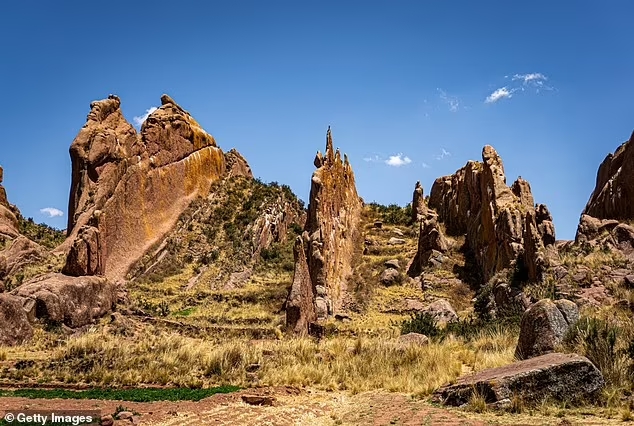
Mysterious 'Gate of the Gods' cut into Peruvian mountain could reveal long-lost advanced civilization | Travel News
Carved with remarkable precision into a cliff face in southern Peru, a massive doorway known as Aramu Muru has captivated researchers and mystics alike since its discovery in 1996. Located near Lake Titicaca, this 23-foot-tall, 22-foot-wide formation features a T-shaped recess—measuring about 6.5 feet high and 3 feet wide—that appears to lead nowhere.
On either side of the niche are vertical grooves, which some speculate may have served symbolic or functional purposes. Independent archaeologist Dr. Mohammad Firoz Khan believes the site predates the Inca, attributing it to ancient pre-Incan cultures, though others suggest more speculative theories involving extraterrestrials.
In a social media post, Dr. Khan highlighted Native American legends that describe the "Gate of the Gods" as a sacred portal through which heroes met divine beings and attained immortality. Today, the site attracts spiritual seekers and curious travelers drawn by tales of otherworldly energy and interdimensional access.

Though mainstream archaeologists continue to investigate its origin and use, the prevailing theory links the carving to the Tiwanaku civilization, which flourished between 200 BC and 1000 AD. However, no organic remains have been found to date the structure definitively, and its carving technique doesn’t fully match known Tiwanaku styles.
Dr. Khan, who specializes in ancient history and archaeology, refers to Aramu Muru as an enduring enigma rooted more in legend than verified history. Long before it was formally documented, the Aymara people—indigenous to the Andes—referred to it as a “Devil’s Doorway,” believing it to be a portal for shamans or selected individuals to journey to spiritual realms. According to Aymara beliefs, unauthorized entry could risk spiritual harm or entrapment of the soul.
Despite being carved into relatively soft red sandstone—making it more feasible for ancient peoples using stone, bone, or wooden tools—its geometric precision continues to puzzle scholars.
The site was uncovered by Jose Luis Delgado Mamani, a local guide who claimed he was led there by recurring dreams and family folklore about a “sacred doorway” in the mountains. But the myth predates its modern discovery.
According to legend, an Inca priest named Aramu Muru fled Spanish invaders with a sacred golden disk once housed in Cusco’s Koricancha Temple. He is said to have activated the portal with this artifact, disappearing into another realm. A small depression in the center of the doorway is believed to be the exact spot where the disk was placed.
The mysterious site gained wider attention through the show Ancient Aliens, where modern shamans were shown performing rituals at the doorway. Commentator David Childress remarked on the structure’s surreal placement—carved meticulously into stone yet leading nowhere. Meanwhile, ufologist Giorgio Tsoukalos suggested the golden disk may have had alien origins and could have been a tool for interdimensional travel.

Some alternative theories propose the doorway once led to a sealed underground temple or hidden chamber. Native American stories also speak of chosen individuals passing through to commune with gods.
Many modern-day visitors report intense sensations at the site—some claim to feel vibrations, spiritual shifts, or even visions when standing inside the recess or touching the stone. Still, no scientific instruments have detected any electromagnetic fields or radiation to support supernatural claims.
Ultimately, Aramu Muru remains a fascinating fusion of myth, mystery, and archaeology—one that continues to inspire wonder and speculation.
